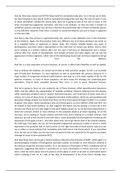Lecture notes
Cell signalling in development: Notch signalling and establishment of the embryonic body plan
- Module
- Notch signaling
- Institution
- University Of Dundee (UoD)
Cell signalling in development: Notch signalling and establishment of the embryonic body plan
[Show more]



